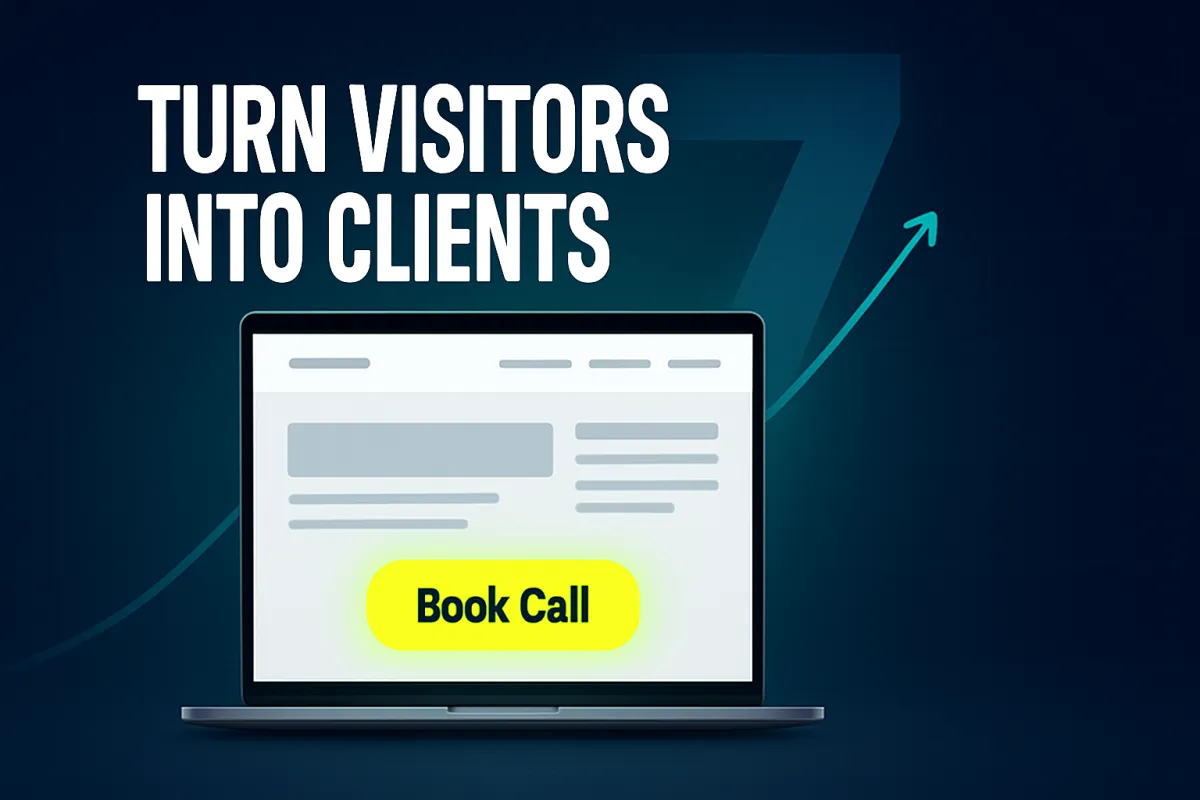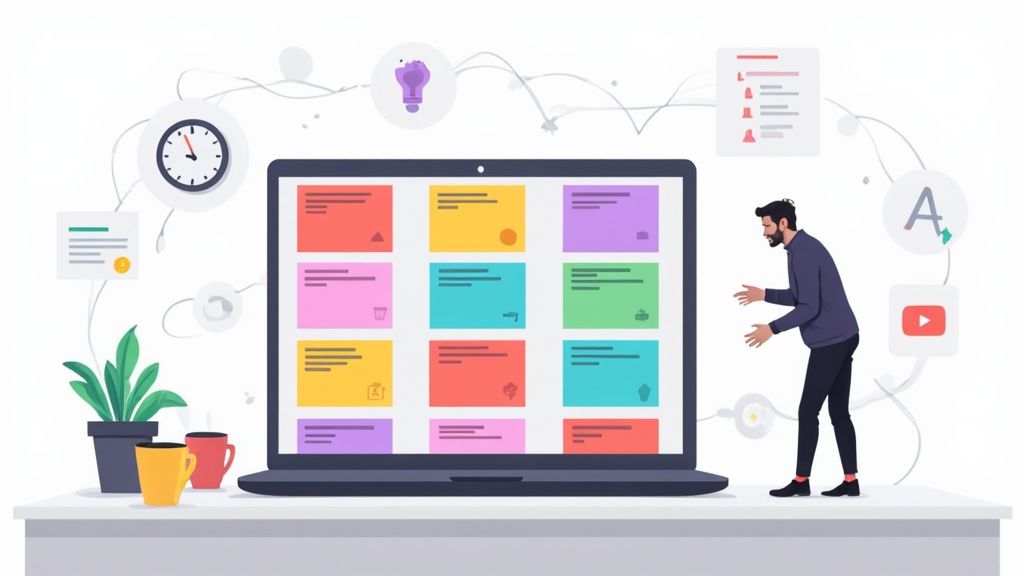Freelance Web Designer Portfolio Teardown: 7-Step Checklist to Convert Visitors into Clients
A reusable framework for how to convert website visitors into clients (built for solo designers)

If your portfolio looks sharp but client inquiries are almost non-existent, you're not the only one. A great-looking website doesn't automatically equal a client-converting website. On average, typical service sites only turn about 2–4% of visitors into leads. That leaves a huge amount of potential work (and revenue) untapped. Source: conversion benchmarks.
The good news: You can change that. This freelance-focused checklist walks you step-by-step through turning your portfolio into an actual lead generation tool.
1) Lead with the client's outcome (not your craft)
Your homepage hero is not about you. It's about the client's results. Visitors need to know who you help, what problem you solve, and the outcome you deliver – all without scrolling.
- Keep it snappy and scannable. Use headlines, bullets, and short phrases.
- Talk benefits (more bookings, increased conversions, easier updates), not just features (responsive, fast, accessible).
- Write like you're speaking directly to them. Use "you" more than "I." Draw the line between what you do and how it impacts their business: ROI, clarity, or faster growth.
For sharper positioning, see: Industry vs. Skill: How Freelance Designers Can Smartly Niche Down to Win More Clients.
2) Turn your work into outcome-backed mini case studies
Your projects should do more than show off pretty visuals. Each one can tell a story: Problem → Solution → Results.
The structure is simple:
- Who the client is and what they needed
- The issue (low leads, messy UX, slow mobile site)
- What you built and why
- The results (bookings up, conversions doubled, time saved)
- A final CTA like, "Want similar results? Let's talk."
Examples worth copying:
- Taslim added one killer line to a project – "After launch, the bakery's online orders doubled in two months" – and it helped him land multiple food-related clients.
- Andy trimmed his portfolio, made it result-focused, and added clean CTAs. In three months, his inquiries jumped significantly.
3) Build trust with social proof and credibility
Clients want proof you can deliver. Show it everywhere, not just at the bottom of the page.
- Place 2–5 short testimonials near your project work and CTAs.
- Ask clients to highlight outcomes, not just kind words.
- If possible, display client logos or industries served.
- If you're newer, use LinkedIn recommendations or certifications instead.
- Add a friendly photo of yourself and a short About blurb that reinforces competence and reliability.
- Keep your own portfolio site tight: no typos, broken links, or sloppy spacing. Your site quality = your work quality.
4) Make action obvious (CTAs that can't be missed)
A client can't hire you if they can't figure out how. Keep the path clear.
- Place a main CTA (like "Work With Me" or "Book a Free Call") in your site header, repeat it mid-page, and again at the bottom.
- Give each portfolio project its own CTA. Every project page should function like a mini landing page.
- Use human-driven copy like "Let's discuss your project" instead of vague "Contact."
- Keep forms short. Name, email, and a quick message is plenty. More fields = fewer leads.
5) Reduce risk with a "starter step"
Making the first move is intimidating for prospects. Lower the stakes for them.
- Offer a free 15–20 minute consultation and make it easy to book.
- Or, create a low-cost starter offer (like a $99 Website Audit). This works as both a trust-builder and a gateway to bigger, higher-value work later. As Taslim discovered, a tiny logo tweak offer turned into a full rebrand deal worth thousands.
- Spell out deliverables and timelines so clients aren't left guessing.
6) Design + UX essentials: structure, speed, and mobile
A sluggish, cluttered site kills conversions.
- For freelancers, a one-page flow is often best: Hero → Projects with results → About → Testimonials → CTA.
- If you go multi-page, keep the nav clean (3–4 items max) and place a CTA everywhere.
- Speed and mobile matter more than anything. Over half of mobile visitors bounce if a page takes longer than 3 seconds to load. Compress images. Limit scripts. Test on real devices.
- If rebuilding, try Webflow. It's great for clean one-page sites, fast iteration, and responsive design.
7) Measure, learn, and iterate (monthly)
Your portfolio isn't "set it and forget it." Track performance and keep tweaking.
- Use light, privacy-safe analytics. Fathom shows you what's working without drowning you in data.
- Track CTA clicks, form submissions, and contact-page visits.
- Notice drop-off points. If users browse projects but don't reach out, add CTAs higher on the page or highlight stronger results.
- Run small tests: CTA text, button color, moving testimonials higher, or leading with your best case study.
- Refresh quarterly. Add new testimonials, update results over time, and replace weaker projects.
Extra reading: How to Get Clients as a Website Designer: A Step-by-Step Process.
Turn this checklist into action
Start small and execute right now:
- Audit your site hero and one portfolio project today. Add a measurable result, a testimonial nearby, and a clear CTA.
- Launch a "starter step" offer this week, whether free or low-cost.
- Set up analytics and set a reminder to review monthly. Over time, small improvements stack up into a serious increase in your portfolio conversion rate.





